Thomas Euler
Estimating smooth and sparse neural receptive fields with a flexible spline basis
Aug 17, 2021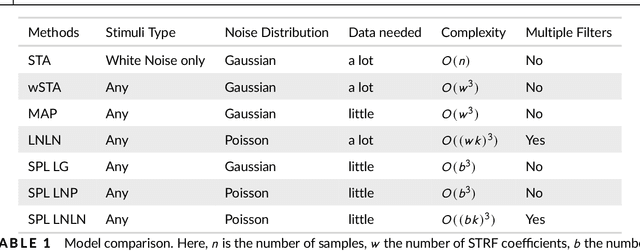


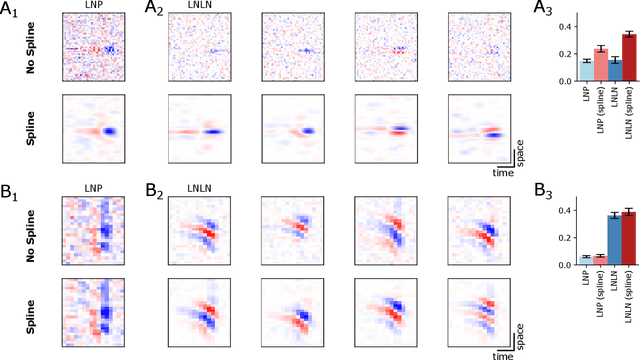
Abstract:Spatio-temporal receptive field (STRF) models are frequently used to approximate the computation implemented by a sensory neuron. Typically, such STRFs are assumed to be smooth and sparse. Current state-of-the-art approaches for estimating STRFs based on empirical Bayes are often not computationally efficient in high-dimensional settings, as encountered in sensory neuroscience. Here we pursued an alternative approach and encode prior knowledge for estimation of STRFs by choosing a set of basis functions with the desired properties: natural cubic splines. Our method is computationally efficient and can be easily applied to a wide range of existing models. We compared the performance of spline-based methods to non-spline ones on simulated and experimental data, showing that spline-based methods consistently outperform the non-spline versions.
Neural system identification for large populations separating "what" and "where"
Jan 29, 2018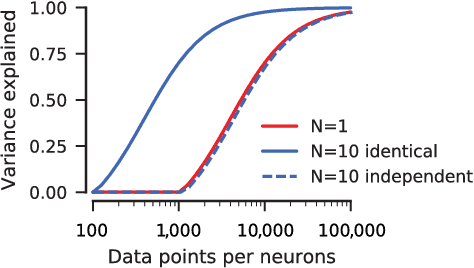


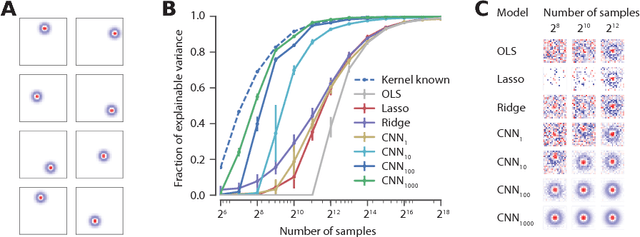
Abstract:Neuroscientists classify neurons into different types that perform similar computations at different locations in the visual field. Traditional methods for neural system identification do not capitalize on this separation of 'what' and 'where'. Learning deep convolutional feature spaces that are shared among many neurons provides an exciting path forward, but the architectural design needs to account for data limitations: While new experimental techniques enable recordings from thousands of neurons, experimental time is limited so that one can sample only a small fraction of each neuron's response space. Here, we show that a major bottleneck for fitting convolutional neural networks (CNNs) to neural data is the estimation of the individual receptive field locations, a problem that has been scratched only at the surface thus far. We propose a CNN architecture with a sparse readout layer factorizing the spatial (where) and feature (what) dimensions. Our network scales well to thousands of neurons and short recordings and can be trained end-to-end. We evaluate this architecture on ground-truth data to explore the challenges and limitations of CNN-based system identification. Moreover, we show that our network model outperforms current state-of-the art system identification models of mouse primary visual cortex.
Supervised learning sets benchmark for robust spike detection from calcium imaging signals
Feb 28, 2015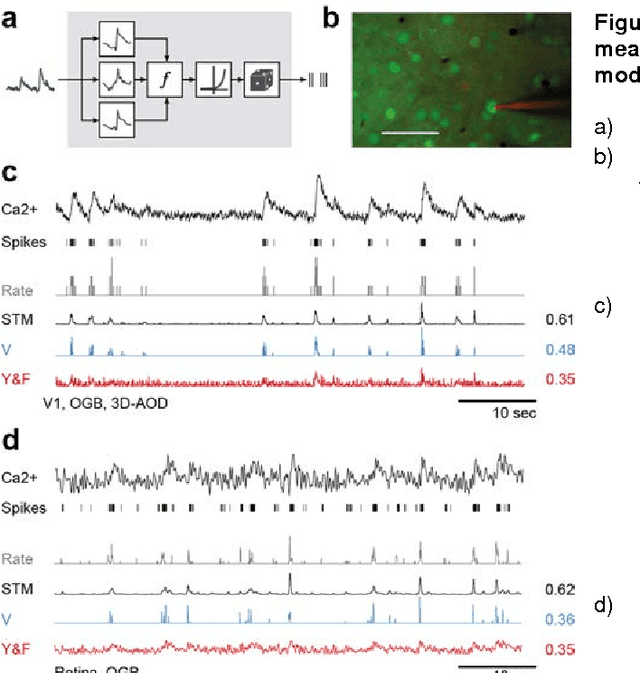

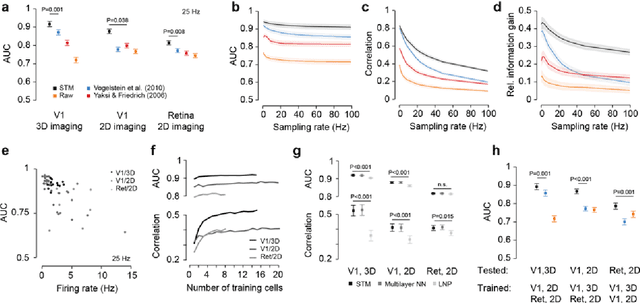
Abstract:A fundamental challenge in calcium imaging has been to infer the timing of action potentials from the measured noisy calcium fluorescence traces. We systematically evaluate a range of spike inference algorithms on a large benchmark dataset recorded from varying neural tissue (V1 and retina) using different calcium indicators (OGB-1 and GCamp6). We show that a new algorithm based on supervised learning in flexible probabilistic models outperforms all previously published techniques, setting a new standard for spike inference from calcium signals. Importantly, it performs better than other algorithms even on datasets not seen during training. Future data acquired in new experimental conditions can easily be used to further improve its spike prediction accuracy and generalization performance. Finally, we show that comparing algorithms on artificial data is not informative about performance on real population imaging data, suggesting that a benchmark dataset may greatly facilitate future algorithmic developments.
 Add to Chrome
Add to Chrome Add to Firefox
Add to Firefox Add to Edge
Add to Edge